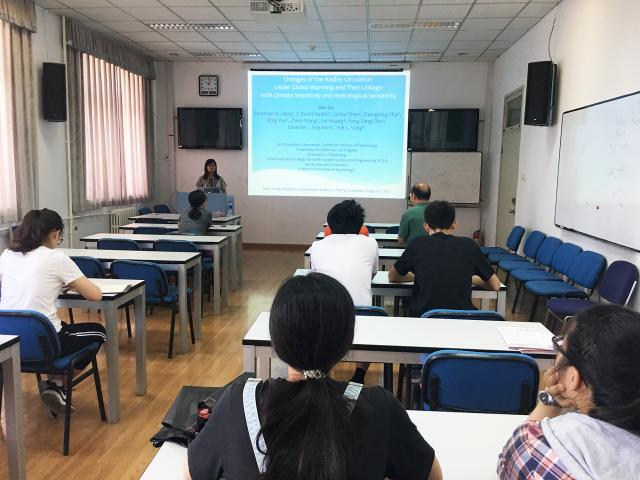主讲:Dr. Hui Su,Jet Propulsion Laboratory, California Institute of Technology
时间:2017年8月7日,星期一,10:00-11:30
地点:物理楼北547
主持/联系:胡永云
摘要:Climate model predictions of global-mean surface temperature and precipitation increases in response to the doubling of CO2, termed as climate sensitivity and hydrological sensitivity respectively, differ by about a factor of 3. Cloud feedbacks are found to be primarily responsible for these large inter-model spreads. We submit that the changes of the Hadley Circulation are strongly coupled to the cloud feedbacks and have important implications for the determinations of climate sensitivity and hydrological sensitivity. In a warmer climate, the structure of Hadley Circulation undergoes complicated changes, including the tightening and strengthening of equatorial ascent, weakening of subtropical subsidence, and poleward shift of descending boundary. These structural changes are closely related to the changes of top-of-atmosphere cloud radiative effects and atmospheric column cooling rates, critical to climate sensitivity and hydrological sensitivity, respectively. We find that the models that simulate a stronger Hadley circulation change tend to produce greater positive cloud feedbacks and more intensified hydrological cycle. Based on the satellite observations that are indicative of the Hadley Circulation strength and variability, the models that simulate higher climate sensitivity and stronger hydrological sensitivity are more consistent with observations.

